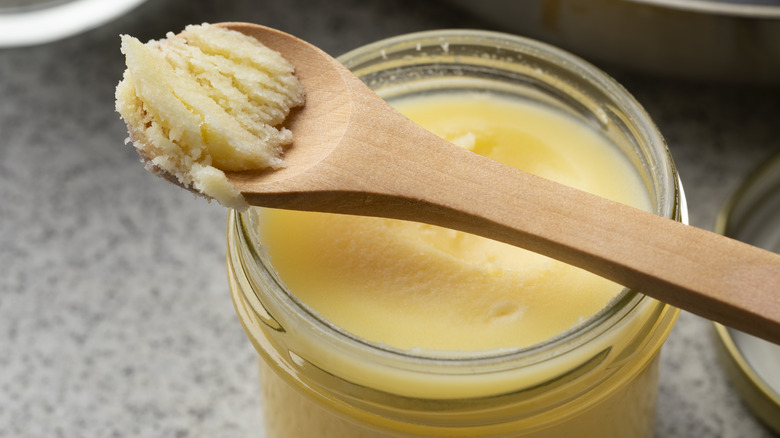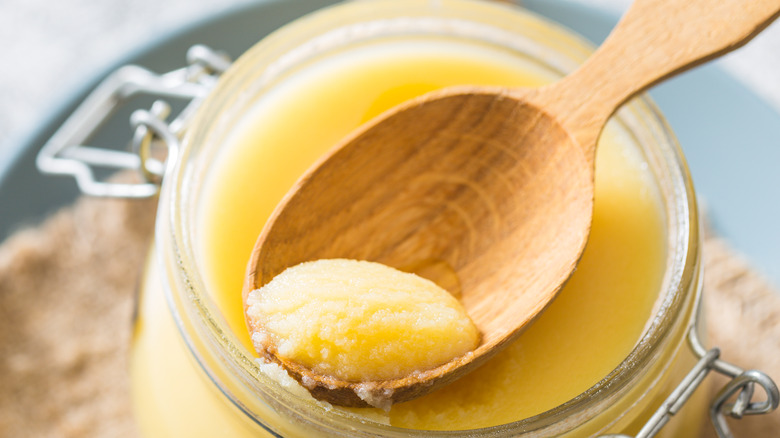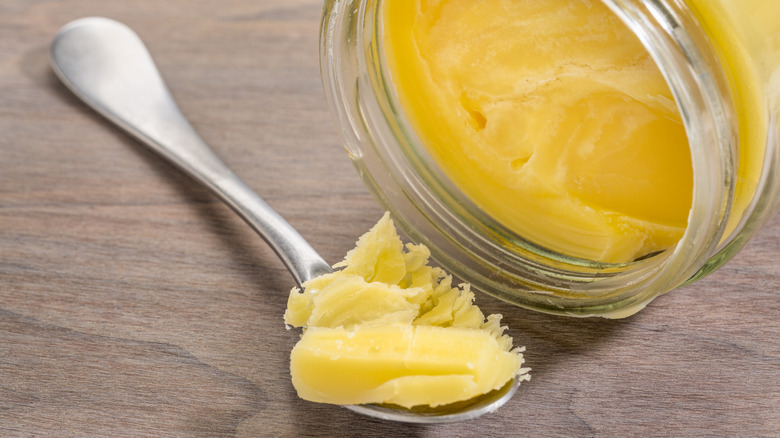Why You Should Never Attempt To Can Butter At Home
When you think of butter, you probably think of the refrigerated sticks ready to be used in recipes for baked goods. And while that's the most common type of butter, canned butter also exists — and it's appealing largely because it doesn't require the refrigeration or specific storage methods "regular" butter often does.
Canned butter is easily portable, which makes it great to have on hand in case of an emergency. With that said, though, preparing it without the safety protocols that dictate store-bought canned butter manufacturing can allow toxins to develop. In fact, the USDA has stated that there's no safe way to make homemade canned butter — you're much better off purchasing it at the store.
Canning anything can be risky, but canning dairy products is particularly unsafe. The danger of canning butter, particularly at home, lies in its dairy components' low acidity, which can cause harmful bacteria to grow.
Why making homemade canned butter is unsafe
Butter isn't as acidic as many other homemade canned products, such as vegetables, which means that canned butter isn't safe to eat at room temperature or after being stored in the freezer. C. botulinum bacteria can grow in room-temperature butter and produce the toxin that causes botulism. This is because the fats in butter will protect the bacteria from any heat that could kill it.
Due to heat's ability to kill these bacteria, applying heat to homemade canned butter seems like a feasible solution. However, home canners often don't have the training or equipment to heat canned butter hot enough to kill all of the C. botulinum spores that can grow.
Commercial canned butter manufacturers typically follow a different, safer process than home canners. Home canners are often instructed to melt down the butter and seal it, but the slight vacuum effect on the seal won't prevent bacteria from forming. By contrast, commercial canned butter manufacturers follow an approved process to ensure its shelf stability. This method involves heating the butter to at least 240 degrees Fahrenheit to kill growing bacteria and using a pressure sealer with at least 10 pounds per square inch of pressure so that new bacteria won't form in the jars. When you buy canned butter, as opposed to making it, you'll avoid the bacteria-borne illnesses that can arise from homemade canned butter.
Why was canned butter created?
Canned butter is a centuries-old innovation, created due to the need to preserve food for long journeys. It rose to prominence during the Alaskan gold rush and grew in popularity as people realized how useful it could be.
In the 1860s and 1870s, miners crowded the area to try to strike it rich — which, naturally, made some types of food expensive in the region. One such food was butter, so the miners devised a way to keep their butter purchases usable for as long as possible: canning. The practice spread, especially as the need to send typically perishable goods, such as butter, to remote locations grew.
Then, as with many other foods, the U.S. military made a breakthrough with canned butter. In 1912, the U.S. Navy developed a type of canned sweet butter for military personnel to use. The sweet butter was in such high demand that it soon became commercially available, so the rest of the United States could enjoy canned butter, too. Although canned butter was once made by everyday people, these days, to avoid contracting serious illnesses, you should stick to buying it at the store.


